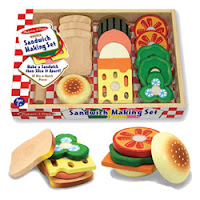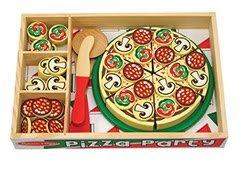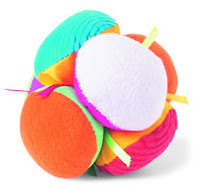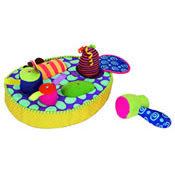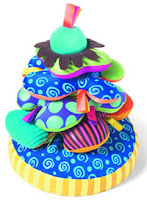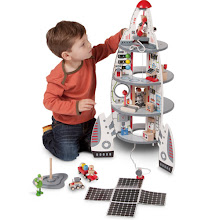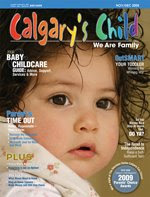Jordan stands before a large sketch pad, takes a marker in hand and carefully uncaps it. She begins scrubbing...first slowly, down and up, down and up. Her motions settle into a rhythm and soon her entire body dances, mirroring the tempo of her strokes. Jordan is drawing. Her whole being is drawing. To the casual observer, this two-year-old is just scribbling. Her marks seem to be random, meaningless. Sometimes she does not even look at the paper as she marks. But there is more going on. Jordan is using her mind and her emotions as she engages in the physical act of drawing. Examining children's drawing may give us important insights into how drawing fits into the overall physical, emotional, and cognitive development of the young child. From toddlerhood through primary school, children choose to draw. What role does drawing play in the young child's development? Scribbling
Around 18 months, toddlers become interested in scribbling. It seems to provide sensory enjoyment, but the child is also interested in the marks that are made. (If the drawing implement does not work, the child quickly loses interest.) The act of scribbling can serve several useful purposes for the young child. Small muscle coordination and control improve with practice, cognitive abilities are exercised, opportunities for social interaction arise, and the physical movements provide emotional release. Because a toddler's small muscle control is not fully developed, he or she may approach the drawing task by grasping the marker with his or her fist, creating a bit of difficulty placing the marks exactly where he or she wants them. Movements are typically large, involving the entire arm with little finger or wrist control. This is because the pattern of physical development proceeds from the center of the trunk outward. With practice, the toddler will naturally improve his or her control of wrist and finger movements. Full control, however, will not be achieved until much later. A few toddlers rest the forearm on the drawing surface to give them additional control. A rhythmic, repetitive, scrubbing motion is common among two-year-olds, providing sensory enjoyment and making drawing a very physical act. By providing children with the materials and opportunities to scribble we can promote physical skills. Just as babbling is a natural way to gain language, scribbling is a natural gateway to muscle control and coordination. In fact, Cratty (1986) termed scribbling "motor babbling." Intellectually toddlers are concerned with both the process and results of their art. They do not intend to represent objects at first. Instead, they are concerned with color and line. However, they may look at the marks and scribbles they have made and, in surprise, recognize a shape and name it. While they may not have intended to draw a dog or tree, the scribbles suggest the shapes. Children interpret, rather than intend. This is called fortuitous realism and becomes common as a child approaches three years. According to Piaget and Inhelder (1963), a child is mentally able to use symbols to represent reality by 18 months. Therefore a child can engage in pretend play. This ability to pretend can be seen as a toddler uses the movement of the crayon or marker to depict an action in his or her drawings. Dots, for example, may be rain falling or animals moving about the page (Berk, 1994). Gestures are used to represent the action (Cox, 1992). Kellogg (1970) described 20 basic scribbles children tend to use during their first, exploratory stage. Most children do not use all of these scribbles (Cox, 1992). Instead, children favor certain ones as they develop individual styles (Gardner, 1980). It also appears that scribbles are not placed randomly. After examining thousands of drawings, Kellogg (1970) catalogued 17 page placements toddlers use as they scribble. Scribblers, then, are decision makers. The opportunity to make decisions contributes to the emerging sense of autonomy which is so important for a two-year-old's emotional development. Not only do children make decisions about line, color, and placement, they also exercise their sense of autonomy by using and gaining control over tools of the culture-crayons, markers, pencils, paper-to engage in an activity valued by the culture. Twos like adults to "watch me." Watch me because I am proud of what I am doing; I am feeling competent; I am doing this wonderful thing by myself. Autonomy! Children can engage in social interaction as they draw with or show their creations to others. As young children sit together, each drawing, they talk, share stories, and trade materials. This is a basis for prosocial interaction that is practiced in an authentic situation. Similarly, the child who saves his or her scribble picture to show daddy is demonstrating his or her use of drawing for social interaction as well as emotional support. Extending the Scribble
Between the ages of two and three the child begins to form what Kellogg (1970) has termed shapes. The scribble forms a cross, an X, and enclosures resembling primitive circles, squares, triangles, and oblongs. Soon after, two of those shapes are used in combination. By age three the child puts together several shapes to form what Kellogg termed aggregates. An important point is reached when the child converts the linear scribble into an enclosed shape. The enclosed shape seems to be the focus of the child's first attempt to make a realistic drawing. That first realistic drawing is frequently a primitive person. When lines are used as boundaries of objects we see a typical tadpole person, so named because it resembles a tadpole. One large circular shape with two lines extending as legs float on a page represents every man. Tadpole guy becomes shorthand for every guy or gal. What economy!Tadpole guy may be embellished with facial features...or maybe not. He may have arms extending from the head but they are added last and may be forgotten unless arms are needed for holding or acting. The circle part may represent just a head, but it may also represent the head and torso combined into a sort of person lump. Children will often place a belly button onto the lump, indicating that it includes the torso. However, if the leg lines are longer than the lump, the belly button may be placed between the leg lines. It could just be that the person lump needs to be big to allow enough room to place the eyes, nose, and mouth. After all, it takes a lot of space to draw all of that. The configuration of tadpole guy does not seem to indicate that children are unaware of body parts or how they fit together. They tend to add parts when reminded that something is missing. They can complete a partially drawn person correctly, and can "build" a person with both head and trunk when given blocks or tiles (Cox, 1992). Tadpole guy simply seems to be a symbolic, rather easy, and convenient way to convey the idea of a person. It isn't until the child is six that outlines replace single lines used to depict legs and arms. Shoulders don't usually appear until age nine, and body proportions begin to take some importance around age eight or nine (Cox, 1992). Representational Drawing
Three- and four-year-olds develop other generic symbols for the repeated drawings of common objects like sun, dog, and house. As children begin to draw in a more realistic manner, they may oscillate back and forth between realism and earlier scribbling patterns but the general movement remains toward realistic representation of what they know of the world. According to Piaget and Inhelder (1963) preschoolers draw what they know about the world, rather than attempting to capture a photographic mirror of reality. That is why we see drawings depicting both the outside and inside of an object at the same time (transparencies or x-rays). While approaching realism, drawings remain fanciful throughout the preschool years with imagination leading color, composition, and content. It is often just pretend, wonderful pretend where ground and sky never meet at the horizon and all of the action takes place in the air gap between. It is a place where we can see the front, profile, and bird's-eye view all at the same time. It is a place where trees and people can be the same size, where grass looks lovely when it is purple, where sun rays reach out to embrace us, and rainbows form without a drop of rain. There is a lot to keep in mind when drawing. All at the same time we must think about the parts of what we are intending to draw, the overall plan of where to draw and how to leave room for the other parts, how to use lines to show things that in reality have no boundary lines around them, and how to control the physical elements to make what happens be what we really want to happen. It has been proposed that the number of things one can keep in mind to work with at one time is a measure of neurological maturity and intellectual functioning (Pascual-Leone, 1984). If so, the complicated, multifaceted nature of the task of drawing would appear to challenge the mind. Realistic Representations
As the child moves into concrete operational thought after age six or seven we see a strong focus on drawing in a more realistic fashion. The concrete operational thinker sees the world in terms of what is, rather than what could be. Therefore, we see drawings reflecting the world in factual, realistic representations, leaving behind the wonderfully fanciful drawings of a year before. The school-age child is focused emotionally on demonstrating skill at the tasks valued in the culture (Erikson, 1950). Artistic realism seems to be valued in North American culture, so realism is reflected in children's drawings. If children judge themselves to be good at drawing, they will likely continue drawing to see themselves as competent. However, there are some factors that seem to interfere with a child's ability to draw realistically. While younger children are not concerned with proportion and perspective, the older school-age child wants his or her drawings to look realistic (Winner, 1986). If he or she is able to solve the problems of proportion and perspective to his or her satisfaction, he or she is more likely to continue to draw (Gardner, 1980). Sadly, many children stop drawing when they are nine or ten because they do not feel that their efforts are satisfactory (Gardner, 1980). We know of no inborn ability that develops into the capacity to draw in three dimensions. (After all, perspective drawing was not part of the Western artistic repertoire until it was developed during the Renaissance.) It would seem, then, that the middle school years would be an ideal time for direct instruction in technical drawing techniques for those children who need that support in order to keep them confident enough to continue drawing. |


















